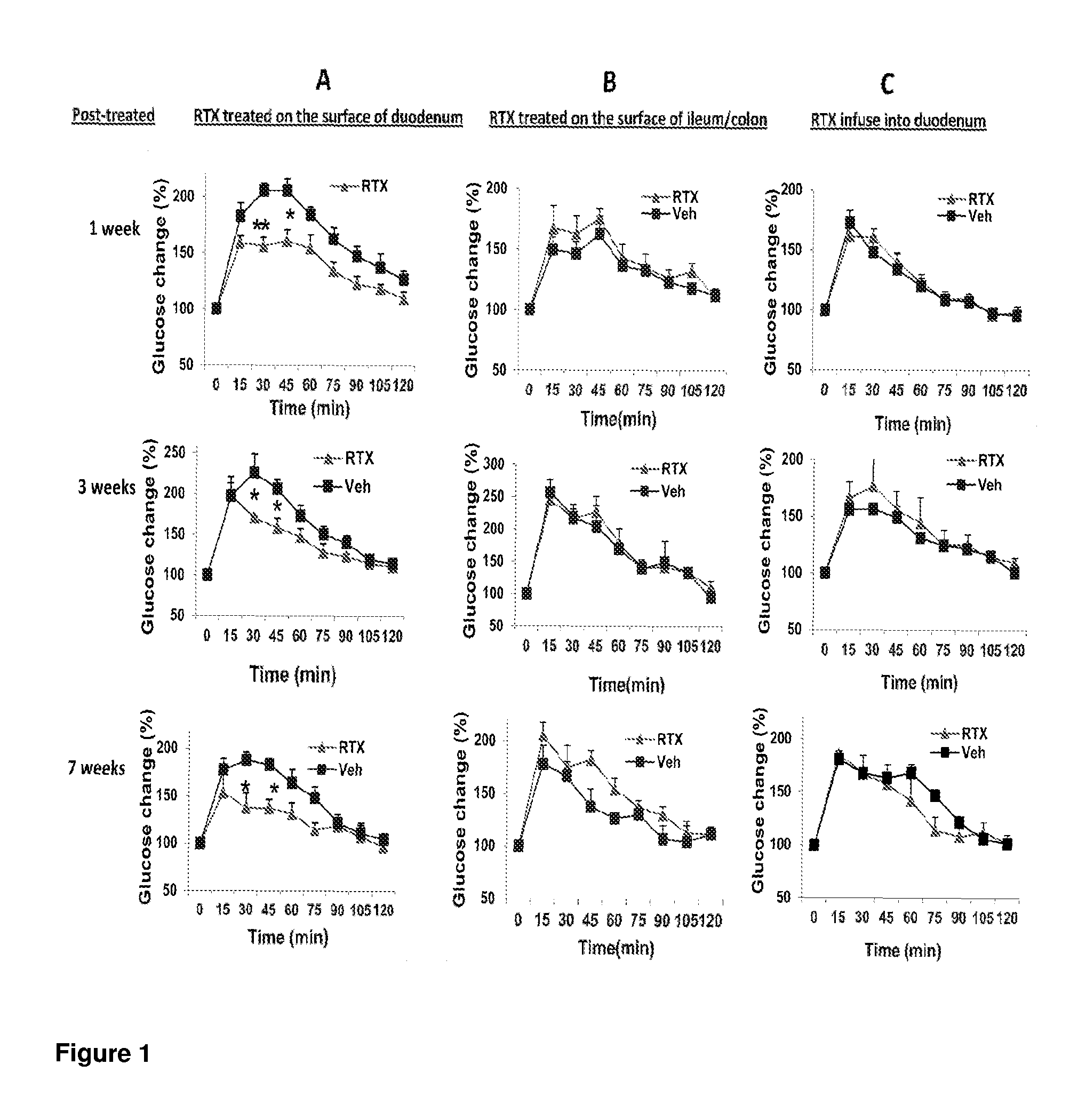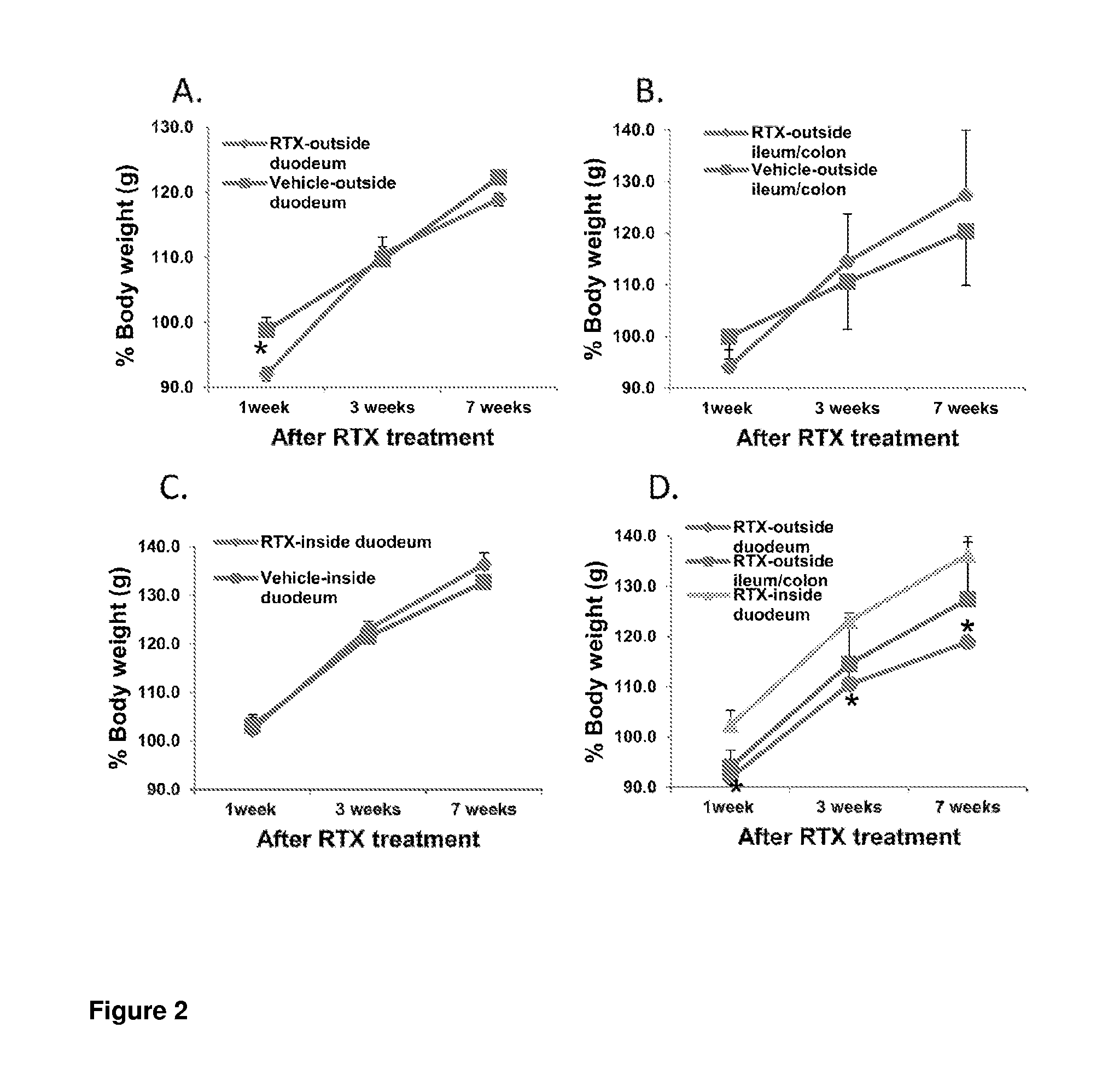Treatments for diabetes mellitus and obesity
a diabetes mellitus and obesity technology, applied in the field of diabetes mellitus and obesity, can solve the problems of insufficient insulin production, inability of cells to respond properly, and long-term complications affecting almost every part of the body
- Summary
- Abstract
- Description
- Claims
- Application Information
AI Technical Summary
Benefits of technology
Problems solved by technology
Method used
Image
Examples
example 1
Effect of RTX on Blood Glucose Tolerance and Body Weight in Rats
[0097]Resiniferatoxin (RTX) is a naturally occurring super-analogue of capsaicin. It is found naturally in the latex of Euphorbia plants. Capsaicin (CAP) is the main pungent component in hot pepper. Resiniferatoxin and capsaicin and their analogues are exogenous ligands for the transient receptor potential cation channel subfamily V, member 1 (TRPV-1), which was formerly known as the Vanilloid receptor 1 (VR1). The only known endogenous ligand for this receptor is the proton. TRPV-1 receptors are found on the visceral sensory nerve fibers of the unmyelinated type (C-fiber) and the thinly myelinated type (A-fiber). TRPV-1 functions as a modulator of sensory nerve responses to various noxious stimuli. Prolonged exposure to capsaicin leads to the desensitization of the TRPV1 receptors and under certain situations, complete ablation of the nerves. Resiniferatoxin induces the desensitization effect and neuronal ablation more...
PUM
| Property | Measurement | Unit |
|---|---|---|
| body weight change | aaaaa | aaaaa |
| concentrations | aaaaa | aaaaa |
| weight loss | aaaaa | aaaaa |
Abstract
Description
Claims
Application Information
 Login to View More
Login to View More - R&D
- Intellectual Property
- Life Sciences
- Materials
- Tech Scout
- Unparalleled Data Quality
- Higher Quality Content
- 60% Fewer Hallucinations
Browse by: Latest US Patents, China's latest patents, Technical Efficacy Thesaurus, Application Domain, Technology Topic, Popular Technical Reports.
© 2025 PatSnap. All rights reserved.Legal|Privacy policy|Modern Slavery Act Transparency Statement|Sitemap|About US| Contact US: help@patsnap.com



